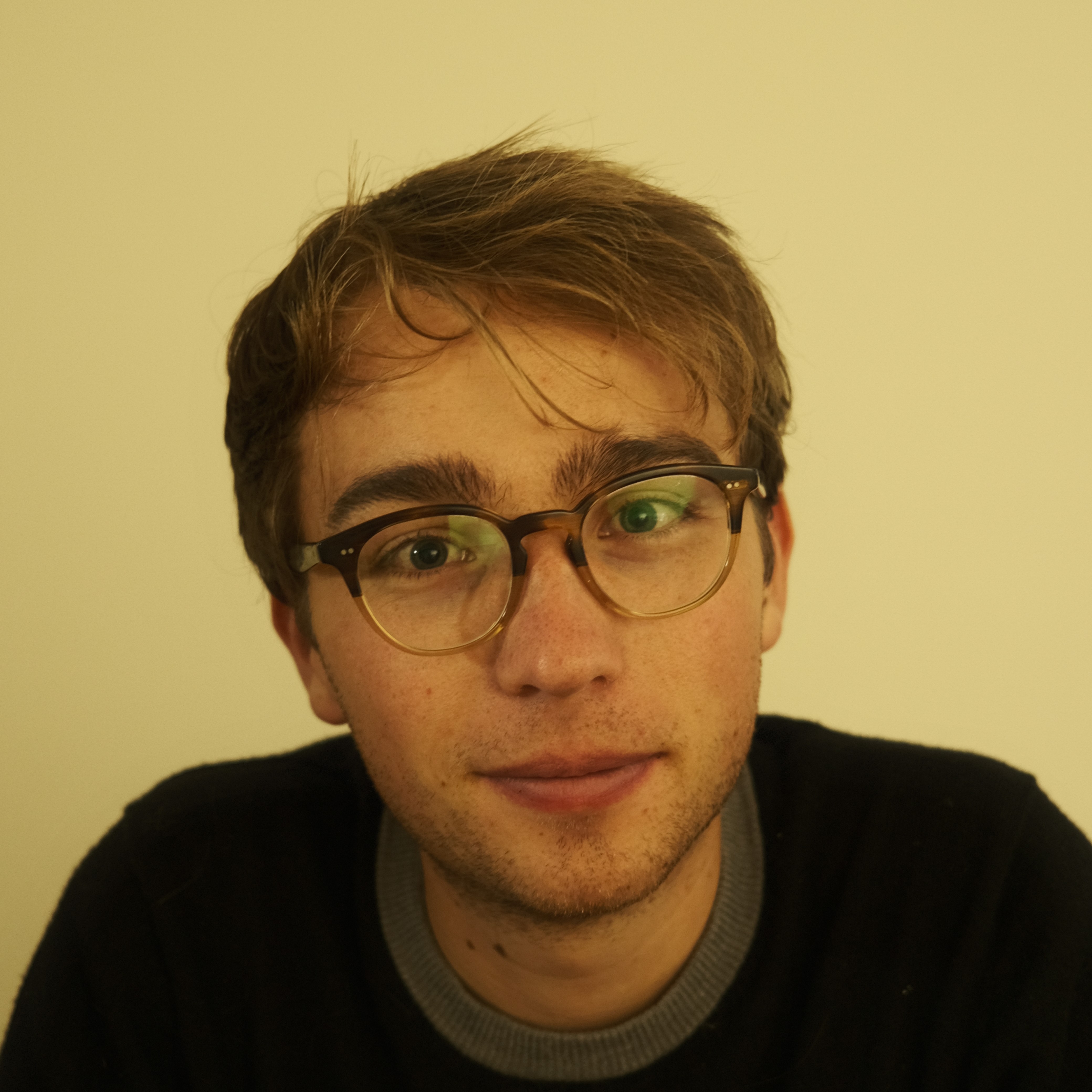A new version of our lab’s widefield analysis toolbox!
Discussion
Our old toolbox was found at qdmpy, but I recieved some complaints that it was non-intuitive to use, mainly because it had a bunch of hidden state. I think the new library is much easier to use – see the examples (or below) and API docs – whilst still holding a bunch of useful features.
For example it is still super simple to fit widefield data with the gpufit backend, and the newer cpufit backend is almost as fast but easier to install. More importantly, you can now import these backends (for windows, or cpufit for linux) with a simple
pip install <path-to-duckit-root>[cpufit,gpufit]
The code is also far more modular so you can use parts as you like, and there’s a system interface so you can mold the libary to your microscopes easily.
A few caveats: we have not moved across vector magnetometry, nor source reconstruction methods. We need to take a little bit of time to do these nicely in general for all defect types (hBN defects, NV in diamond etc.), and I have a thesis to write.
If you think any of this would be useful to you please give it a try, and I’m more than happy to give you a hand if you want to get it set up for your lab. Raise an issue in the repo or send me an email.
Example of usage
I thought I’d give a quick example of how to use the toolbox, for a simple ODMR use-case. See here for a notebook with outputs.
Example script
import dukit
import os
import matplotlib.pyplot as plt
import numpy as np
import logging
# this script assumes bunch of things in the default kwargs,
# e.g. that you want a div normalisation.
with open(
os.path.dirname(str(__file__)) + "/../TEST_DATA_PATH.py", encoding="utf-8"
) as fid:
exec(fid.read()) # reads in TEST_DATA_PATH string
# === SET PARAMS
DIR = TEST_DATA_PATH + "mz_test/" # type: ignore
FILEPATH = DIR + "ODMR - Pulsed_10"
FIG_FORMAT = "png"
# ADDITIONAL_BINS = (4, 2) # asymmetric: (x, y)
ADDITIONAL_BINS = 4
ADDITIONAL_SMOOTH = 0 # can be asymmetric, but best not.
ROI_COORDS = (65, 65, 190, 190) # start_x, start_y, ... for 4x binning
# ROI_COORDS = (-1, -1, -1, -1) # full ROI
AOI_COORDS = ((30, 40, 40, 45), (20, 20, 24, 24), (50, 50, 51, 51))
# AOI_COORDS = ((30, 40 , 40, 45),)
# to see how to create these see mz_draw_polys.py
POLY_PATH = FILEPATH + "_oldpolys.json" # for 4x binning & ROI crop above
polygon_nodes = dukit.load_polygon_nodes(POLY_PATH)
ANNOTATE_POLYS = True
FIT_BACKEND = "scipyfit"
FIT_MODEL = dukit.LinearLorentzians(2)
GUESSES = {"pos": [2720, 3020], "amp": -0.004, "fwhm": 20, "c": 1.0, "m": 0.0}
BOUNDS = {
"pos_range": 30,
"amp_range": 0.1,
"fwhm_range": 50,
"c_range": 0.1,
"m_range": 0.01,
}
# === CREATE OUTPUT DIR & set mpl rcparams
OUTPUT_DIR = f"{FILEPATH}_output/"
try:
os.mkdir(OUTPUT_DIR)
except FileExistsError:
pass
dukit.mpl_set_run_config()
logging.info(dukit.__version__)
with open(OUTPUT_DIR + "dukit_version.txt", "w") as fid:
fid.write(dukit.__version__)
FIT_RES_DIR = OUTPUT_DIR + "/data/"
# set below to "" or None or False to *not* load prev fit
PREV_FIT = "" # FIT_RES_DIR[:]
# === START SCRIPT
# === READ IN DATA
sys = dukit.CryoWidefield()
sweep_arr = sys.read_sweep_arr(FILEPATH)
sig, ref, sig_norm = sys.read_image(FILEPATH)
raw_pixel_size = sys.get_raw_pixel_size(FILEPATH)
# === SMOOTH
if ADDITIONAL_SMOOTH:
sig = dukit.smooth_image_stack(sig, ADDITIONAL_SMOOTH)
ref = dukit.smooth_image_stack(ref, ADDITIONAL_SMOOTH)
sig_norm = sys.norm(sig, ref)
# === REBIN & CROP
sig_rebinned = dukit.rebin_image_stack(sig, ADDITIONAL_BINS)
pl_img = dukit.sum_spatially(sig_rebinned)
sig = dukit.crop_roi(sig_rebinned, ROI_COORDS)
del sig_rebinned # hacky but I want to keep the memory clear
ref = dukit.crop_roi(dukit.rebin_image_stack(ref, ADDITIONAL_BINS), ROI_COORDS)
sig_norm = dukit.crop_roi(
dukit.rebin_image_stack(sig_norm, ADDITIONAL_BINS), ROI_COORDS
)
pl_img_crop = dukit.sum_spatially(sig)
# === PLOT PL INFO
_ = dukit.plot.roi_pl_image(
pl_img,
ROI_COORDS,
opath=OUTPUT_DIR + f"pl_full.{FIG_FORMAT}",
show_tick_marks=True,
raw_pixel_size=raw_pixel_size,
applied_binning=ADDITIONAL_BINS,
)
_ = dukit.plot.aoi_pl_image(
pl_img_crop,
*AOI_COORDS,
opath=OUTPUT_DIR + f"pl_full.{FIG_FORMAT}",
show_tick_marks=True,
raw_pixel_size=raw_pixel_size,
applied_binning=ADDITIONAL_BINS,
)
_ = dukit.plot.aoi_spectra(
sig,
ref,
sweep_arr,
specpath=OUTPUT_DIR + "aoi_specta.json",
opath=OUTPUT_DIR + f"aoi_spectra.{FIG_FORMAT}",
*AOI_COORDS,
)
# fit_roi, roi_avg_fits
roi_fit_results = dukit.fit_roi(
sig,
ref,
sweep_arr,
FIT_MODEL,
GUESSES,
BOUNDS,
opath=OUTPUT_DIR + f"roi_avg_fit.json",
)
_ = dukit.plot.roi_avg_fits(
roi_fit_results, opath=OUTPUT_DIR + f"roi_avg_fits.{FIG_FORMAT}"
)
# fit_aois, aoi_avg_fits
aoi_fit_results = dukit.fit_aois(
sig,
ref,
sweep_arr,
FIT_MODEL,
GUESSES,
BOUNDS,
*AOI_COORDS,
opath=OUTPUT_DIR + f"aoi_fits.json",
)
_ = dukit.plot.aoi_spectra_fit(
aoi_fit_results,
roi_fit_results,
sig.shape[:-1],
*AOI_COORDS,
opath=OUTPUT_DIR + f"aoi_spectra_fit.{FIG_FORMAT}",
)
# fit_all_pixels_pl
if PREV_FIT:
fit_image_results = dukit.load_fit_results(PREV_FIT, FIT_MODEL)
else:
fit_image_results = dukit.fit_all_pixels(
FIT_BACKEND,
sig_norm,
sweep_arr,
FIT_MODEL,
GUESSES,
BOUNDS,
roi_fit_results[FIT_BACKEND],
odir=FIT_RES_DIR,
)
# pl_param_images
_ = dukit.plot.pl_param_images(
FIT_MODEL,
fit_image_results,
"pos",
opath=OUTPUT_DIR + f"pl_pos.{FIG_FORMAT}",
raw_pixel_size=raw_pixel_size,
applied_binning=ADDITIONAL_BINS,
)
_ = dukit.plot.pl_param_images(
FIT_MODEL,
fit_image_results,
"sigma_pos",
opath=OUTPUT_DIR + f"sigma_pl_pos.{FIG_FORMAT}",
raw_pixel_size=raw_pixel_size,
applied_binning=ADDITIONAL_BINS,
errorplot=True,
)
defect = dukit.NVEnsemble()
b_nvs = defect.b_defects((fit_image_results["pos_0"], fit_image_results["pos_1"]))
dshifts = defect.dshift_defects(
(fit_image_results["pos_0"], fit_image_results["pos_1"])
)
# calc b_nv_bg, b_nv_sbg
# b_nv_bgs = tuple([dukit.get_background(bnv, "poly", order=2)[0] for bnv in b_nvs])
b_nv_bgs = tuple(
[
dukit.get_background(
bnv,
"interpolate",
polygon_nodes=polygon_nodes,
interp_method="linear",
sigma=0.6,
)[0]
for bnv in b_nvs
]
)
b_nv_sbg = tuple([bnv - bnv_bg for bnv, bnv_bg in zip(b_nvs, b_nv_bgs)])
for i, b in enumerate(b_nv_sbg):
np.savetxt(OUTPUT_DIR + f"/data/b_nv_sbg_{i}.txt", b)
_ = dukit.plot.b_defects(
b_nvs,
name="raw b_nvs",
opath=OUTPUT_DIR + f"raw_b_nvs.{FIG_FORMAT}",
c_range_type="percentile",
c_range_values=(2, 98),
raw_pixel_size=raw_pixel_size,
applied_binning=ADDITIONAL_BINS,
)
_ = dukit.plot.b_defects(
b_nv_sbg,
name="sub_bg b_nvs",
opath=OUTPUT_DIR + f"b_nvs-sub_bg.{FIG_FORMAT}",
c_range_type="percentile",
c_range_values=(2, 98),
raw_pixel_size=raw_pixel_size,
applied_binning=ADDITIONAL_BINS,
annotate_polygons=ANNOTATE_POLYS,
polygon_nodes=polygon_nodes,
)
_ = dukit.plot.dshifts(
dshifts,
name="dshifts",
opath=OUTPUT_DIR + f"dshifts.{FIG_FORMAT}",
c_range_type="percentile",
c_range_values=(2, 98),
raw_pixel_size=raw_pixel_size,
applied_binning=ADDITIONAL_BINS,
)
plt.show()

